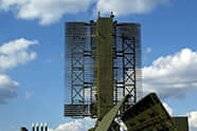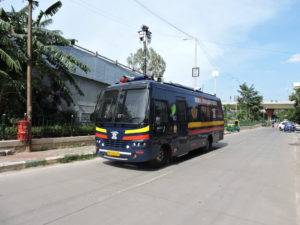Introduction
Many users want to migrate to IP based digital surveillance; but are concerned with the existing infrastructure and investment already made in analog surveillance. They want to ensure that the analog equipment is not thrown away but seamlessly integrated into the new IP solution being introduced in the organization.
This article identifies the critical elements that users need to consider, while making the transition from analog cameras to IP cameras, to ensure a somewhat smooth migration. It also helps a user appreciate the issues involved for its particular application.
Here is a summary of those key elements:
- Compatibility of the existing recording solution with the new set-up
- Identify IP cameras the existing solution supports
- If needed, evaluate options for a new NVR or IP Video Management Software
- Assess the increased bandwidth’s impact on the network
- Assess the increased storage required for the IP camera generated content
Compatibility of the existing recording solution with the new set-up
The first step is to identify if the existing recorder/DVR supports IP cameras. If the DVR does not support IP cameras, the options would be:
- To monitor the IP cameras directly with no recorder. This may not be a good option as the user will need additional surveillance personnel to view the live video; and there will be no option for post analysis as there is no recorded video available
- Set-up a separate NVR to record the video from the IP cameras
- Add a decoder to decode and record the IP camera’s video stream on the existing DVRs.
Identify the IP cameras this solution support
In case the user is going with the existing recording solution; it will definitely need to find out what manufacturers and models of IP cameras it supports. This can be confusing, as in the case of analog cameras, compatibility between the DVR and the various analog cameras was not a major issue. However, with IP cameras, the user will have to check every time for not only manufacturer support but for specific model support.
In addition, irrespective of whether the user is using an existing recorder or have opted for a new NVR, it is very important for to identify the type of IP camera needed; based on the user’s application (please refer to our earlier article “IP Cameras and their Housing options”) and budget.
The first two points help a user determine the degree of difficulty, with respect to upgrading to an IP video surveillance solution.
Evaluate options for a new NVR and/or IP Video Management Software (VMS)
If the user has decided to go for a separate NVR, then the entire activity gets more complex. There are dozens of companies that offer NVRs and IP Video Management Software (VMS). Most organizations would want a single video management system to record and access all cameras. In addition, IP Video Management software only supports IP video streams; hence, the user will need to add encoders to each of the existing analog cameras to convert the analog video streams, and store/view them in the new setup.
Assess the increased bandwidth’s impact on your networks
When migrating from analog to IP, if the recording resolution is kept the same, the impact on network bandwidth will be minimal. For instance, most analog cameras record at 5 frames per second at CIF (320 x 240 pixels) resolution. At these levels, bandwidth consumption is quite low (under 500 Kbps) relative to today’s networks (100 Mbps ++). Even with a few dozen cameras, bandwidth usage will not make a significant impact on the existing network.
However, for high resolution and/or frame rates, the user will need to start assessing the impact. Based on compression techniques, resolution and frame rate settings, each camera can consume anything between 1.5 Mbps to 5 Mbps. All this starts adding up to network bandwidth usage. The user will need to ensure that this additional bandwidth requirement is factored in, during the transition planning; and ascertain whether the existing network is capable of handling this additional requirement, or whether it needs to be upgraded.
Assess the Storage Impact
Similar to the bandwidth impact, improving video quality, impacts storage needs. With IP cameras a user can easily be looking at increases in excess of 1TB storage; which is very significant. The user can define different frame rates and resolutions for the various IP cameras and accordingly estimate the storage requirement.The time duration of storing a recorded video content; before archiving / disposing it, could also impact storage needs.
Conclusion
An organization can consider a progressive, step-by-step approach to transition from analog to IP based surveillance; to achieve a painless migration, and spread the overall transition cost over a longer period.



